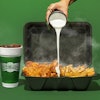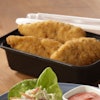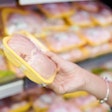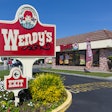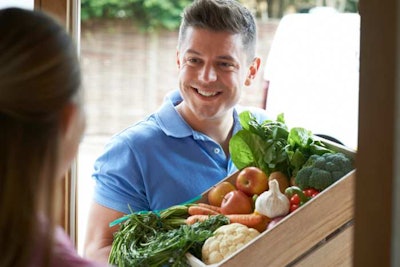
For a company with no retail footprint like Blue Apron, home delivery is the sole business. Blue Apron’s mission is “to make incredible home cooking accessible to everyone,” said Stuart Blankenhorn, supply chain strategist with Blue Apron at the 2017 Chicken Marketing Summit in Asheville, North Carolina in mid-July 2017.
The company, founded in 2012, has already shipped enough ingredient-and-recipe meal kits to provide 140 million meals. The company has grown dramatically in recent years, with revenue rising from a little under $80 million in 2014 to $795 million in 2016.
“We’re looking to do more than just deliver meals to customers,” said Blankenhorn. “We really want to build a better food system. We think we are in a unique position in the supply chain to really drive change, to benefit not only ourselves but also our customers and the environment as well,” Blankenhorn said.
Blue Apron supplies its customers with food that is GMO free, antibiotic free and hormone free, and many things are U.S. Department of Agriculture (USDA) certified organic.
Blankenhorn explained that while the internet has made the idea of food home delivery easier for consumers, home-delivered meal preparation kits also eliminate the need for consumers to plan meals.
Different idea of customer convenience
For a business like Ingles Markets which has been said to have locations in areas where food stores are scarce, sometimes referred to as food deserts, convenience is of equal importance to consumers, but in a different way.
Ingles attempted food orders online 12 years ago and couldn’t get customers to do it. They even offered coupons as an incentive for their customers to try this method. They had little success. However, this was pre-smartphone days and not everyone had internet in their homes at the time.
Customers use the Ingles locations to socialize with others. “It’s really the community center,” said Leah McGrath, corporate dietitian at Ingles Markets. They can meet for lunch and talk at the locations. She’s seen an occasional game of bingo being played. Some have approached McGrath with the idea that there would be some appeal to consumers in remote locations to just be able to order their food online and just pick it up. She said that, although the company had very little success in its previous attempt, Ingles is being approached to consider the idea again.
Working it for the business benefit
Rodney Antolock, president of Harris Teeter, says that the company’s “expresslane” program allows consumers to order their groceries online for pick up at their local store and is available in about 80 percent of Harris Teeter stores.
Antolock said that the time of year has a lot to do with the success of so-called click-to-connect programs. Harris Teeter does about 4 percent of its total business sales in the winter through click and connect versus about 2 percent in the summer. This could have to do with kids being in and out of school and the need for convenience at busier times of the year he explained.
There is also a home delivery option in expresslane in certain areas. Harris Teeter has been in the home delivery business for a much shorter time. Home delivery is about 10 percent of its business in the winter; much like click to connect, it sees a decline in the summer.
“It is not nearly as profitable as when customers actually come into our store,” Antolock said. “Luckily about 96 percent of our customers come in and do all the service for themselves, when we must put the food on the shelves and then take it back off ourselves it becomes a less profitable business,” he added.
Antolock believes click to connect and home delivery is the retail stores’ both biggest threat and biggest opportunity.
Same convenience, different mission
Church's Chicken is a predominantly urban business that prides itself on supplying customers with an affordable source of protein within the states. While most of Church's locations are set up to serve food on site, some locations offer delivery service.
Church’s Chicken is the fourth-largest chicken chain in the world with sales of roughly $1.2 billion in 23 countries. In Iraq, home deliveries make up 50 percent of business, John (Barry) Barnett, senior vice president of global supply chain and purchasing with Church’s Chicken explained. He added that of course different circumstances in different countries increase the demand for home delivery.
Barnett believes delivery from restaurants will continue to grow because younger generations want to spend more time gathered together rather than prepare a meal or spend time traveling to a destination.
Amazon — joining the trend
AmazonFresh is Amazon’s latest attempt to compete with brick-and-mortar retailers. This time taking on grocery stores head on with home delivery of perishable food items like meat and fresh produce. However, it does not offer these services in all areas. Blankenhorn noted that for Amazon to see success with the new program, it will have to figure out the delivery service plan when handling fresh merchandising. This is something both he and Antolock agreed should be attainable for the company.
Chicken Marketing Summit 2018
Chicken Marketing Summit uniquely explores issues and trends in food marketing and consumer chicken consumption patterns and purchasing behavior. In addition to educational sessions, attendees have numerous networking opportunities to foster interaction between speakers and fellow poultry industry peers. Chicken Marketing Summit 2018 will take place at the Four Seasons Resort Orlando at Disney World in Orlando, Florida, on July 22 -24, 2018.
Read more from the Chicken Marketing Summit:
www.wattagnet.com/topics/6962
